Media | Articles
Caterham, Morgan, Norton: British folly on four, three and two wheels
Perfection is overrated. It’s the quirks of life that make it interesting.
Which is to say, foibles are fun, eccentricity is exciting, peculiarity precedes personality.
They’re characteristics that the British motor industry, whether by design or ineptitude, has always personified and—we’re delighted to say—still does.
To prove the point we’ve gathered three of the barmiest Brits in production today, on four, three and two wheels. Put sense aside. Park practicality and feast on the flaws of the Caterham Super Seven 600, Morgan Super 3 and Norton Commando 961—our choice of the best of bonkers Britain on four, three, and two wheels.
***
I couldn’t have picked a more appropriate starting point. Portmeirion might just be the most bizarre village in Britain. Nestled on the coast of North Wales, overlooking the Irish Sea, it represents the 50-year-long obsession of architect Clough William-Ellis to build a little bit of Italy in his homeland.
Modeled on the Mediterranean towns clinging to the cliffs of the Italian Riviera, Portmeirion boasts a central piazza, surrounded by grand porticoes and pastel-painted terracotta-topped houses. Construction began in 1926 with a hotel and it wasn’t until 1976 that William-Ellis was done.
In the interim, Portmeirion gained fame for its scene-stealing role in the 1967 TV hit The Prisoner. It was right here that Patrick McGoohan declared, “I am not a number. I am a free man!”
Dubbed “The Village” in the show, Portmeirion featured Mini Mokes flitting around for transportation, with McGoohan’s Lotus Seven featuring in the show’s title sequence. These days it’s electric golf carts that whizz tourists around, but as one of our flock is a Seven, we’re granted access.
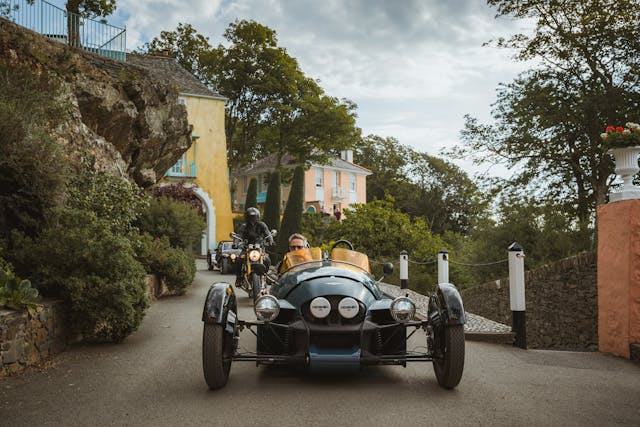
Driving through the town’s narrow, cobbled streets is completely surreal. My view from the Morgan’s open cockpit is uninterrupted by such items as a windscreen, windows, or roof. The weather is uncharacteristically warm and, if it wasn’t for the giant Welsh dragon adorning a fluttering flag above, I could easily imagine I’m in Italy. The scent of salt and rhododendrons fills the air as I putter along, accompanied by amusing pops and farts from the Morgan’s exhaust.
The noises it makes are just one small part of the Morgan Super 3’s talent to entertain. The driver and passenger enjoy it, yes, but so does anyone in the car’s orbit. My journey to Wales has been captured by countless smartphones. Every traffic light has been an opportunity for someone to grab a selfie and a soundbite. Typically, that starts with the question “What is it?” so here’s the answer.
The Super 3 is a fresh take on Morgan’s earliest traditions. As far back as 1909 Henry Frederick Stanley Morgan built his first Runabout: a three-wheeled, single-seater designed under Britain’s cyclecar rules. That meant it could be driven on a motorcycle license and avoid the expensive taxes levied on “proper” cars.
Morgan continued to make three-wheelers until the 1950s, finally bringing the concept back in 2011 with a V-twin-powered 3-Wheeler. These Morgans were almost always powered by motorcycle motors, hung ahead of the front axle, but in 2022 the Super 3 introduced a whole new recipe.

The engine, a 1.5-liter Ford three-cylinder, sits under the rounded hood—no parts exposed. Even more significant is that the Super 3 is built around a bonded aluminum tub from the experts at Superform, making it the first Morgan not to feature any wood in its construction.
Over the chassis, aluminum body panels form a delightful steampunk-like shape. Think tin-bath-meets-rocketship-meets-racecar. The 20-inch disc-like front wheels are a work of art in themselves and fitted with bespoke Avon tires. Hidden beneath the rear clamshell, and driven via a Mazda MX-5 Miata five-speed transmission and Kevlar-reinforced rubber belt, is a single 15-inch wheel-and-tire combo.

Accessorized with exoskeleton luggage racks and Cibié rally spotlights, the Super 3 is like nothing else you’ll encounter on the road. Which is what makes it such a crowd-puller.
Some modest acrobatics are needed to step over the side of the cockpit and drop into the driver’s seat, especially if you want to avoid footprints on the fabric. Once ensconced, you slide the pedal box rather than the seat into position, but there seems to be enough adjustment for drivers of all sizes.
The simple dash features a twin-gauge digital center display for speed and engine rpm and not much else. Toggle switches for lights and horn are solidly made, albeit in plastic, where metal might have looked nicer. Nonetheless there’s a really solid (and weatherproof) feel to the interior. Of our trio, overall build quality is highest here.
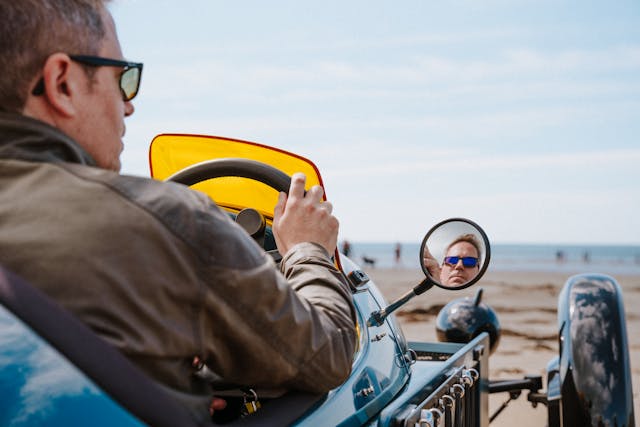
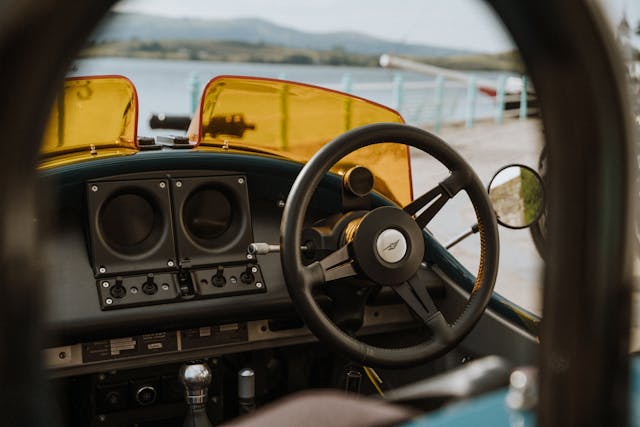
My view ahead is bisected by a pair of yellow aeroscreens which rather give the impression of wearing bifocals with the wrong prescription. The choice is to hunker down and look through the Perspex where everything is distorted (SUVs get squished into coupes) or sit up straight and look over it. The latter approach requires braving full-force wind in the face. Taller drivers are forced to brave the elements. The rear roll hoops, meanwhile, appear to be mostly decorative seeing as most drivers’ heads will be above them.
Marketplace
Buy and sell classics with confidence
For the long motorway stretch of my trip from London to Wales I elect to wear a full-face helmet, but I take it off again as soon as I hit the kind of roads for which the Super 3 was built.
Although there’s little length to it, the Morgan is wide–98.5 inches at the front—and positioning is key to making progress. I find that looking out of the side of the car, at the front wheel, really helps to place it accurately in relation to the center line of the road. Soon, I acclimate to the Morgan’s width and slightly slow steering, which requires big inputs of the large and lovely Moto Lita wheel.
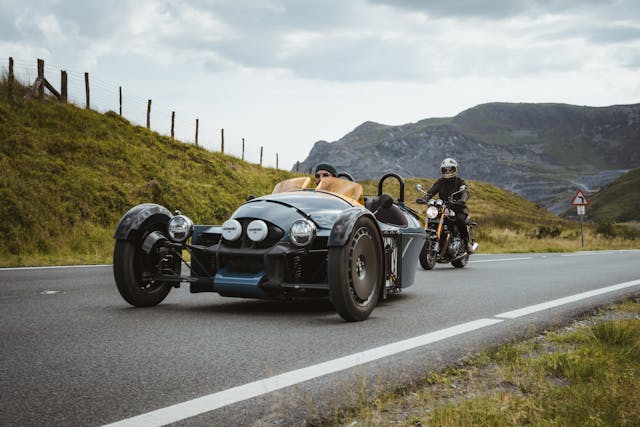
The suspension is firm, and the Super 3 feels a little skittish as I attempt avoiding bumps with both the front wheels and the rear—nearly impossible without weaving all over the road. However, with familiarity comes more confidence and I’m able to explore the car’s cornering capability a bit on roundabouts. Given the skinny front tires, the Morgan has a surprising amount of grip. Push on and there’s a progressive transition to gentle understeer which can be tackled with a choice of more or less throttle. Although the Ford engine produces just 120 horsepower, the Super 3 weighs only 635 kg (1400 pounds) and that single rear wheel will break traction if asked, allowing a little oversteer on exit.
Morgan claims it will accelerate from 0-62 mph in seven seconds but proximity to the ground and exposure to the elements means it feels quicker. The sweet shift of the Miata gearbox rewards dropping a gear to overtake slower cars, whose passengers universally reach for their phones to snap a photo.
I arrive in Wales the night before our Portmeirion rendezvous, but despite the better part of six hours behind the wheel I feel exhilarated rather than worn down. I await the return trip not with dread, but rather anticipation.
***
First there are two other machines to sample, however. We take a short detour to the nearby Black Rock Sands, one of the few beaches in the UK where cars are permitted, to grab more photos, but discover that motorcycles aren’t allowed to be ridden there.
That means my first experience of the Norton Commando 961 is helping to push it into position for the camera—and it’s no lightweight. Despite there being plenty of gaps in the frame, the Commando weighs in at over 500 pounds.
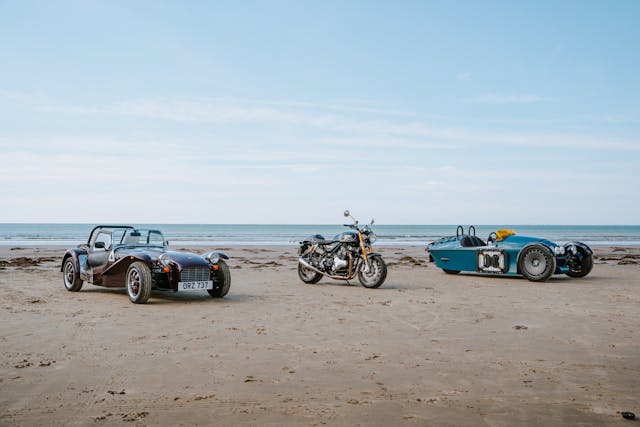
Later, as I swing my leg over at a gas station a few miles from the sands, I’m especially wary of this weight. Actually, I’m apprehensive about riding at all; as it’s been 15 years since I owned a proper bike and a good eight years since I last rode anything. My history on two wheels has been divided between lightweight Japanese 400s and 600s and Italian scooters with a quarter of the Norton’s capacity.
Norton’s history, meanwhile, dates to 1898, when James Landowne Norton founded the firm to supply parts for the fledgling motorcycle industry. In 1902 the company built the first bike to wear its name, the 143-cc Energette.
It was in the 1930s that Norton really made its name, winning no less than 78 out of 92 Grands Prix between 1930 and 1937. In 1967 the company launched the arguably the world’s first superbike—the Commando. Launched as a 750, its 60-horsepower air-cooled parallel-twin propelled it to 115 mph and over the next decade sales were just as fast, with 55,000 Commandos delivered.
There were several attempts in the U.K. and even the U.S. to keep the Commando alive when the Norton factory closed, but it wasn’t until 2008 that the company was revived. In 2020 it was bought by India’s TVS Motor Company and given a new lease on life.
Its 961-cc oil and air-cooled engine was redesigned and, although the classic styling has largely remained, there have been some rather sophisticated updates to the chassis. Attached to the hand-welded steel frame are aerospace-grade aluminum yokes, the forks and shocks are from Öhlins and the brakes are by Brembo. Carbon fiber is used for the mudguards.
Two versions are sold (although not yet in the U.S.): a Café Racer with a low-slung riding position and the more upright, touring-and-town-focused Sport, which we have on hand.
Despite the high quality of componentry, my instant impression is that it’s like riding a classic bike. The engine’s slightly snatchy power delivery makes the Norton feel as if it’s running carbs rather than crank-fired, electronic injection. The gear change is imprecise (and nigh on impossible to find neutral without several stabs), and the suspension is set soft, so that there’s quite alarming dive under braking.
Over the next couple of hours as we explore the wonderful roads of Snowdonia, I begin to adapt to the Commando’s quirks, leaning on the rear brake more than the front and applying throttle progressively. With my attention on smoothness I start to enjoy the bike more, it sounds absolutely epic for one thing, with a glorious mechanical rattle and sonic boom from the exhaust. If loud pipes save lives then the Commando has to be one of the safest ways to travel.
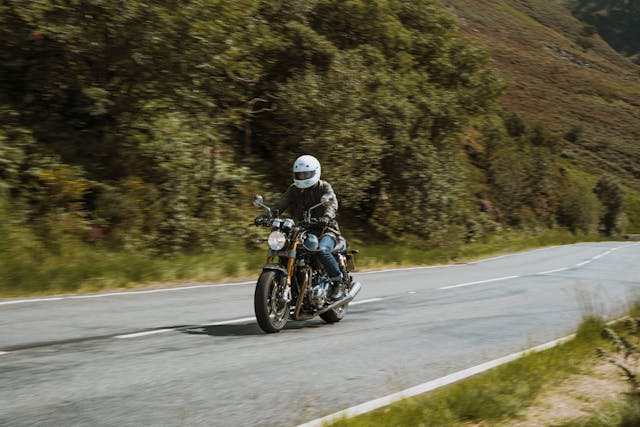
Rolling it into gentle curves becomes a joy and, after the wide Morgan, I’m loving how every road simply opens up when you’re on two wheels. The high riding position gives such great visibility, too.
I never quite get used to low-speed maneuvering, which is doubtless largely down to my years of abstinence, but the Commando does feel top-heavy and its turning circle isn’t what you’d call tight.
It may be the original superbike, but with just 78 horsepower the Commando isn’t especially quick by today’s standards. You could certainly buy a lot more speed for a lot less cash, but that’s not really the point.
***
The same is true of the Caterham Super Seven 600. The entry to the Caterham range musters only 85 horsepower from its 660 cc three-cylinder Suzuki turbo engine and it matters not one jot.
It’s perhaps the most unusual take on the Lotus Seven formula that Caterham cars took on 50 years ago. Over five decades the cars have featured, Ford, Rover, and Vauxhall engines of assorted sizes, but this both the smallest and the only turbocharged engine installed to date.
I owned a Seven for a couple of years, a more track-oriented 1.6-liter car that was originally built as a Caterham Academy racer. As result it was just a bit too stiff on the road, with a tendency to get airborne over even small bumps, and although its Avon tires would grip mightily when up to temperature, in cold or damp conditions the rear wheels would light up at the slightest provocation. It had only a half-roof and no heater, and doing up the four-point harnesses before every drive was a pain.
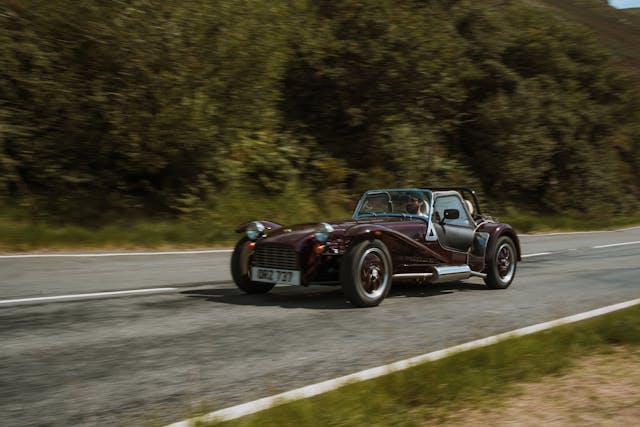
The Super Seven 600 is a limousine in comparison. Its swooping wings immediately make it look immediately less racy and that’s translated into the driving experience. The ride quality is excellent, compliant without being wallowy, making it far more relaxing to drive.
Or at least it would be if it wasn’t for the hilarious sounds emanating from the engine. The boosted motor has just a touch of lag before the whoosh of the turbo brings a burst of forward speed. Lift off to upshift and there’s a bang from the exhaust and the flutter of a wastegate. It’s like the car is beatboxing to the rhythm of your journey.
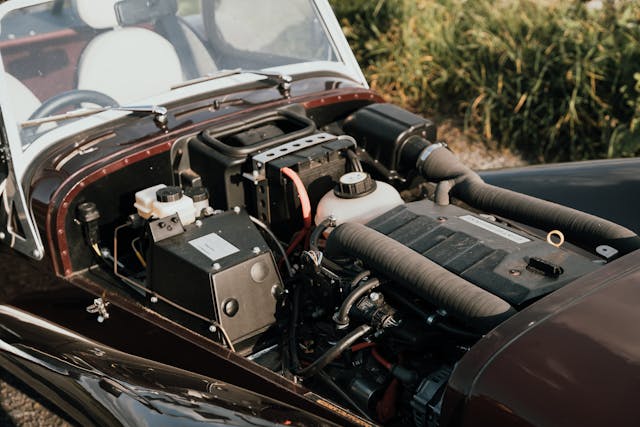
Meanwhile, the tiny Moto Lita steering wheel is barely bigger than a go kart’s and has a similarly direct connection with the front wheels. Also scaled down are the pedals, which are very tightly-spaced, and the stubby gear lever which must have one of the shortest throws ever installed in an automobile.
The Seven’s 14-inch wheels wear skinny Avon rubber and, despite the dearth of power, it’s easy enough to overwhelm the rears and indulge in bit of opposite-lockery should the mood take you.
It’s really all the Seven you’d need for road driving and is certainly entertaining enough to find oneself spontaneously shouting “I am a free man!”
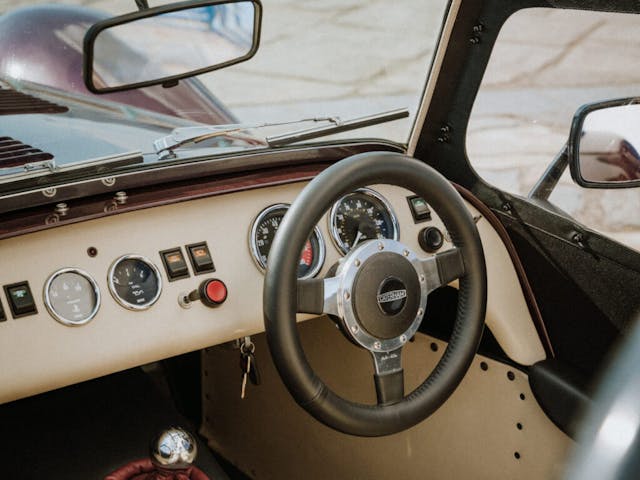
***
Of course, nothing in life is free. The cost of this quirkiness is not inconsiderable. As one would expect, the Norton Commando 961 is the least expensive, with pricing from around £17,000 ($21,400). Up next is the Caterham which costs £29,999 ($37,800) fully built, or less if you assemble it from a kit (the only option for U.S. customers). Finally there’s the Morgan which starts at around £42,000 ($52,800) but comes in at more than £55,000 ($69,100) as tested.
The Seven is the most usable of the three, with its nods to (relative) comfort and weatherproofing, while the Norton’s old-school ride is engaging, if a little tricky at times. This has been a quest for quirks, however, and on that basis alone the Super 3 is the clear leader. Unnecessary, impractical, yet utterly charming, it is the one I’d pick to live a life full of foibles.
***
Check out the Hagerty Media homepage so you don’t miss a single story, or better yet, bookmark it. To get our best stories delivered right to your inbox, subscribe to our newsletters.


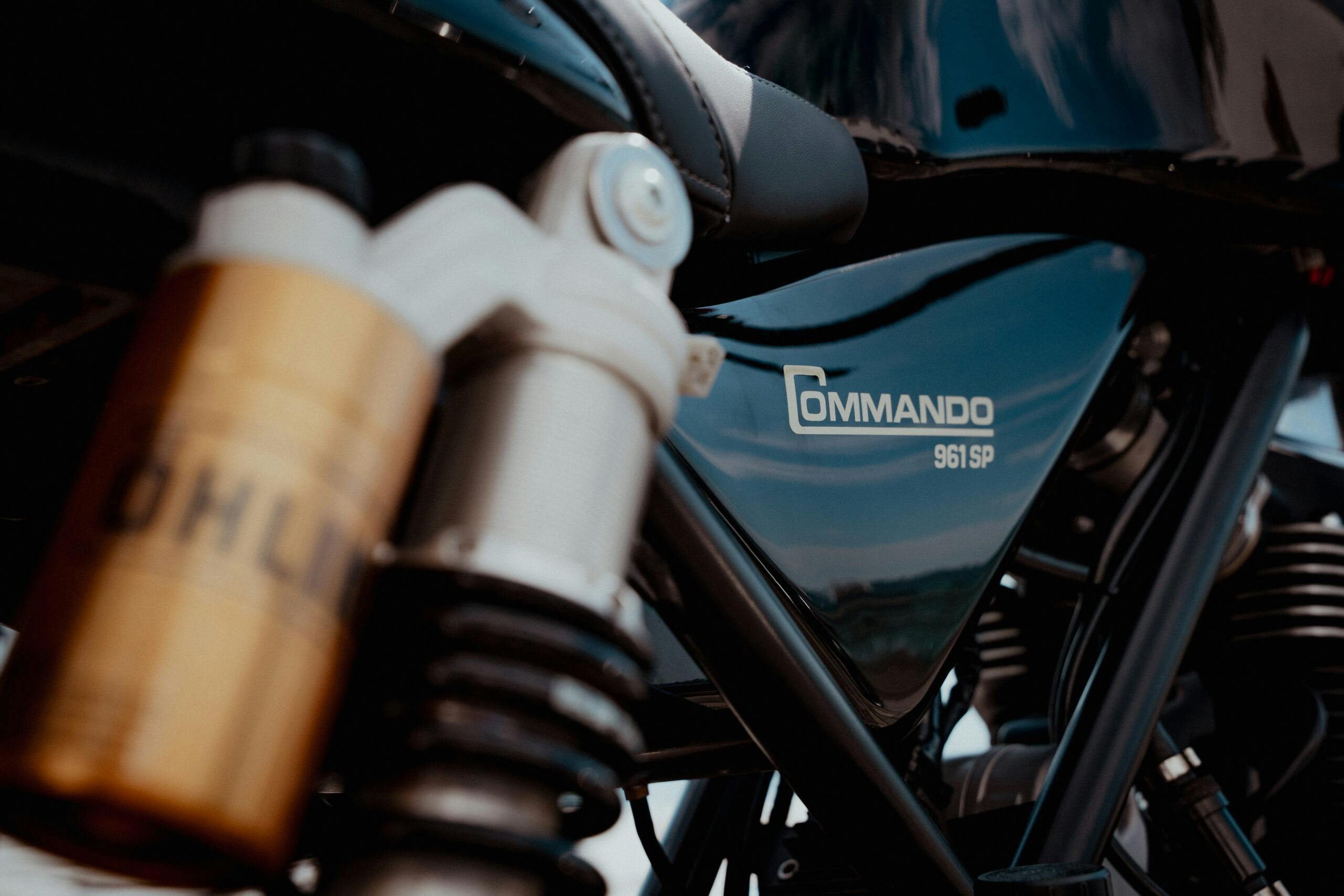

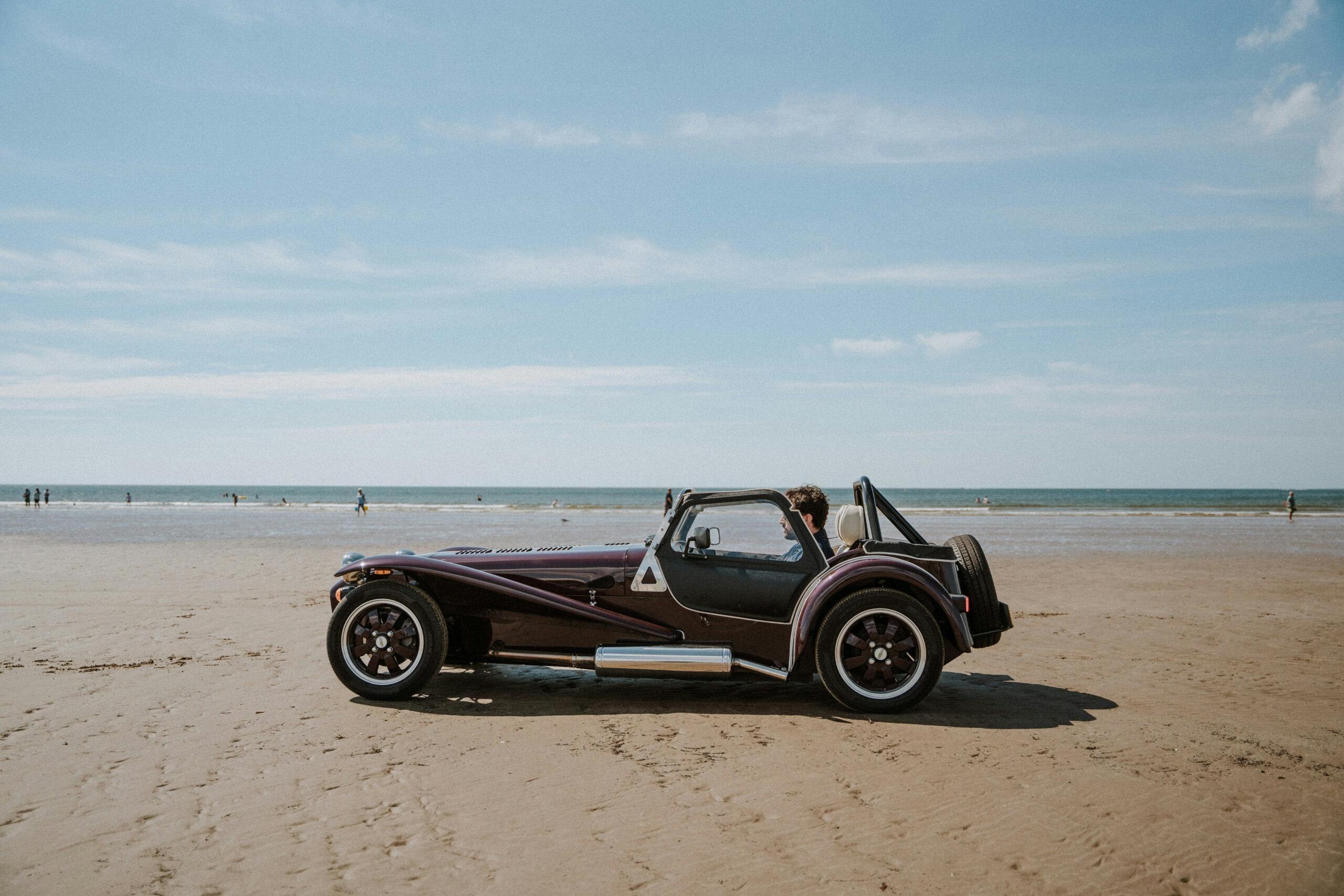

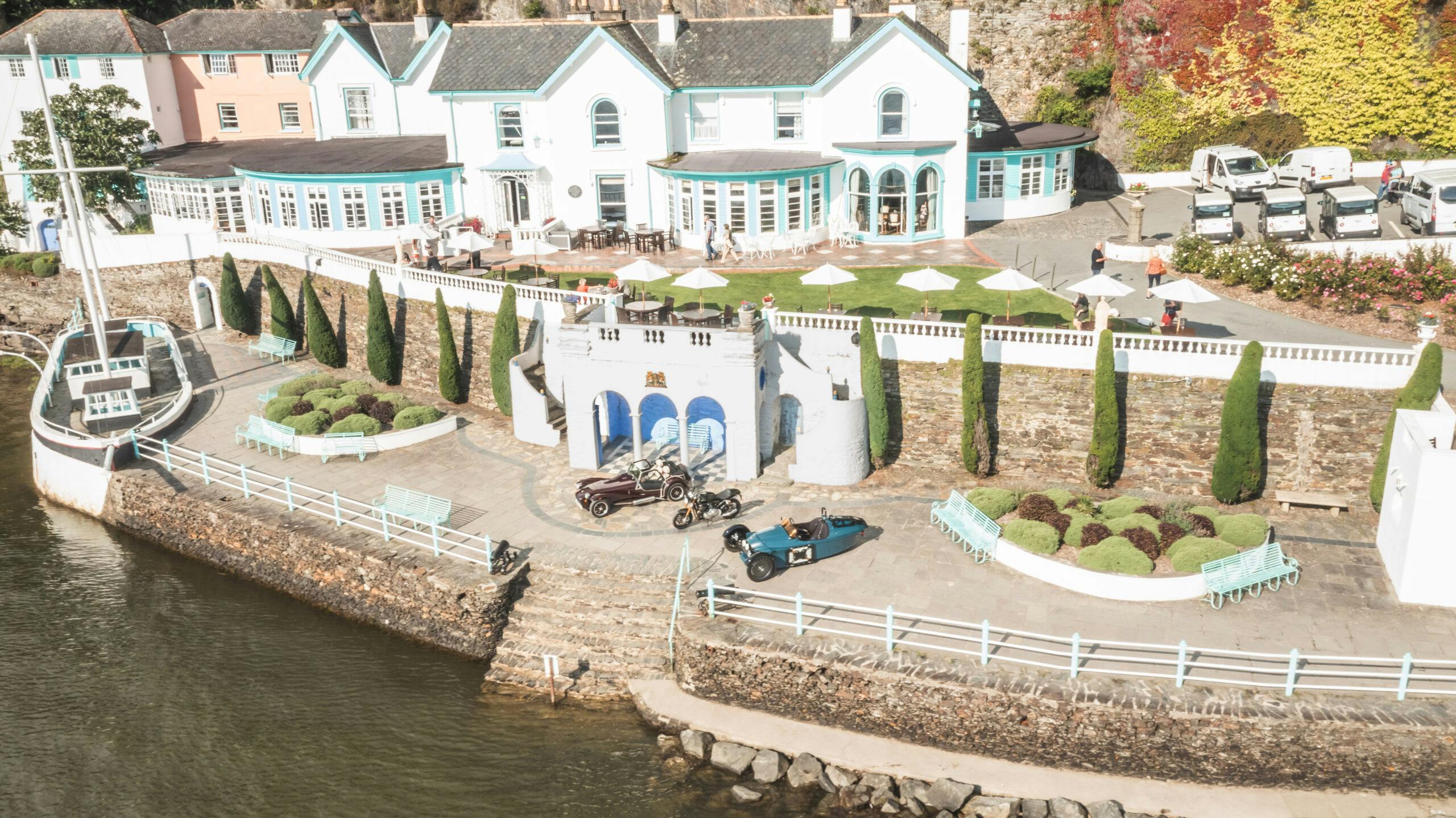
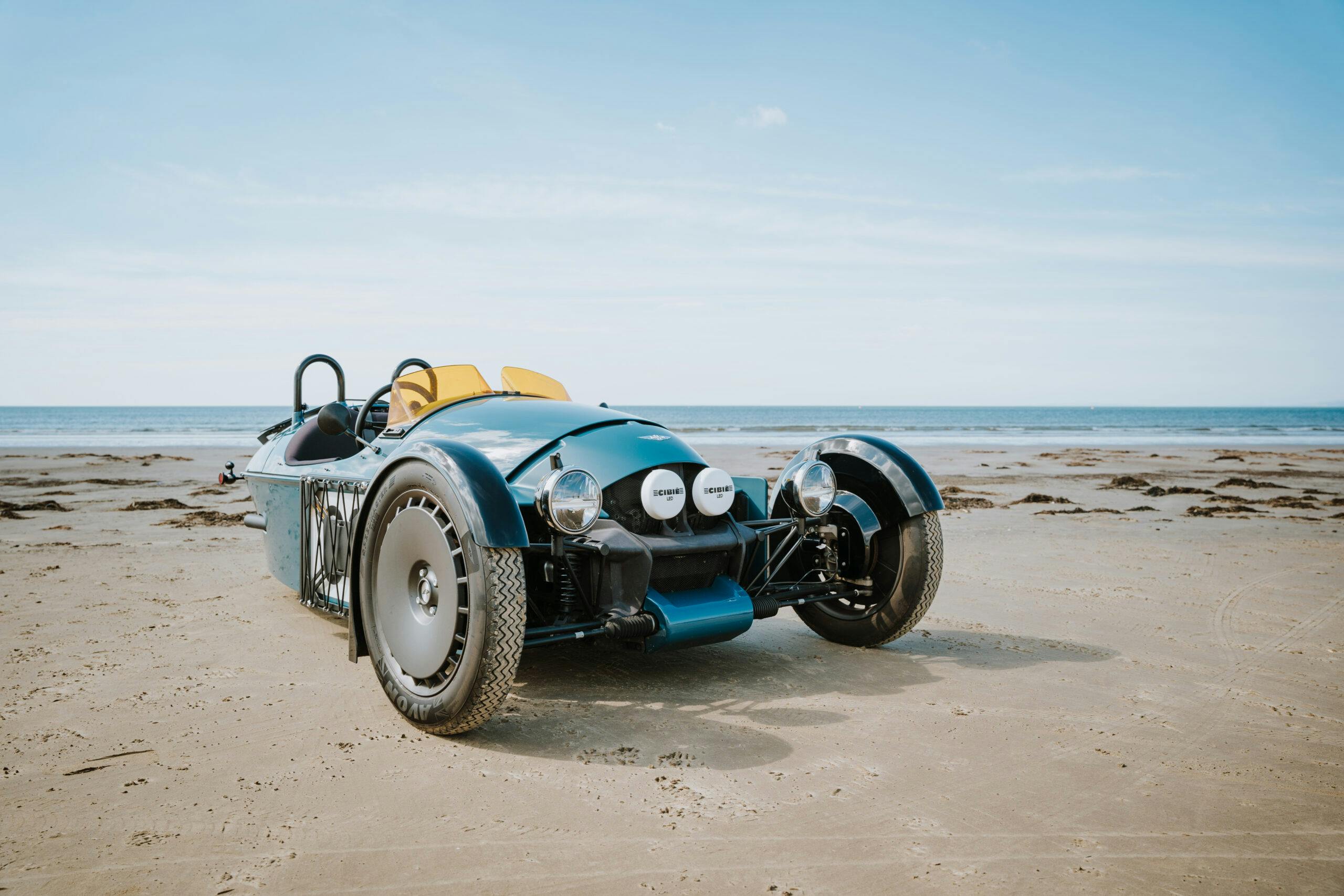





















I like the Caterham the best of this list.
I owned a 72 Norton Commando Roadster, a 73 Fastback, and a 77 850. The 850 I bought new when Norton announced they were ending production. I kept them all until 2006 when a divorce forced a reluctant sale. The same fellow bought all 3 of them. The 850 only had 700 miles on it . In my opinion, the 73 with the megaphone pipes had the ultimate sound at full song of any motorcycle ever built.
I rode a Dunstall Norton 850. Superb handling for its day, remarkably little vibration due to Isolastic subframe mounts, but you had to adapt to right-side shifter and up for low. I entered a corner too fast, tried to drag the rear brake a little and instead upshifted and lurched forward. The exceptional handling saved me. Saw original Morgan 3-wheelers race at the Pittsburgh Grand Prix – looked like a blast. The Caterham 7 is on my bucket list.
My favorite has to be the Morgan, just because it’s so different! But really, I’d take any of the three, or all of them!
All Morgan 3-wheelers were NOT powered by motorcycle engines hung out front. The F-Series 3-wheelers made from 1930 to 1952 had 4-cylinder Ford flathead automobile engines under their little bonnets, not out in the open. Blanket statements are no substitute for subject knowledge and proper research.